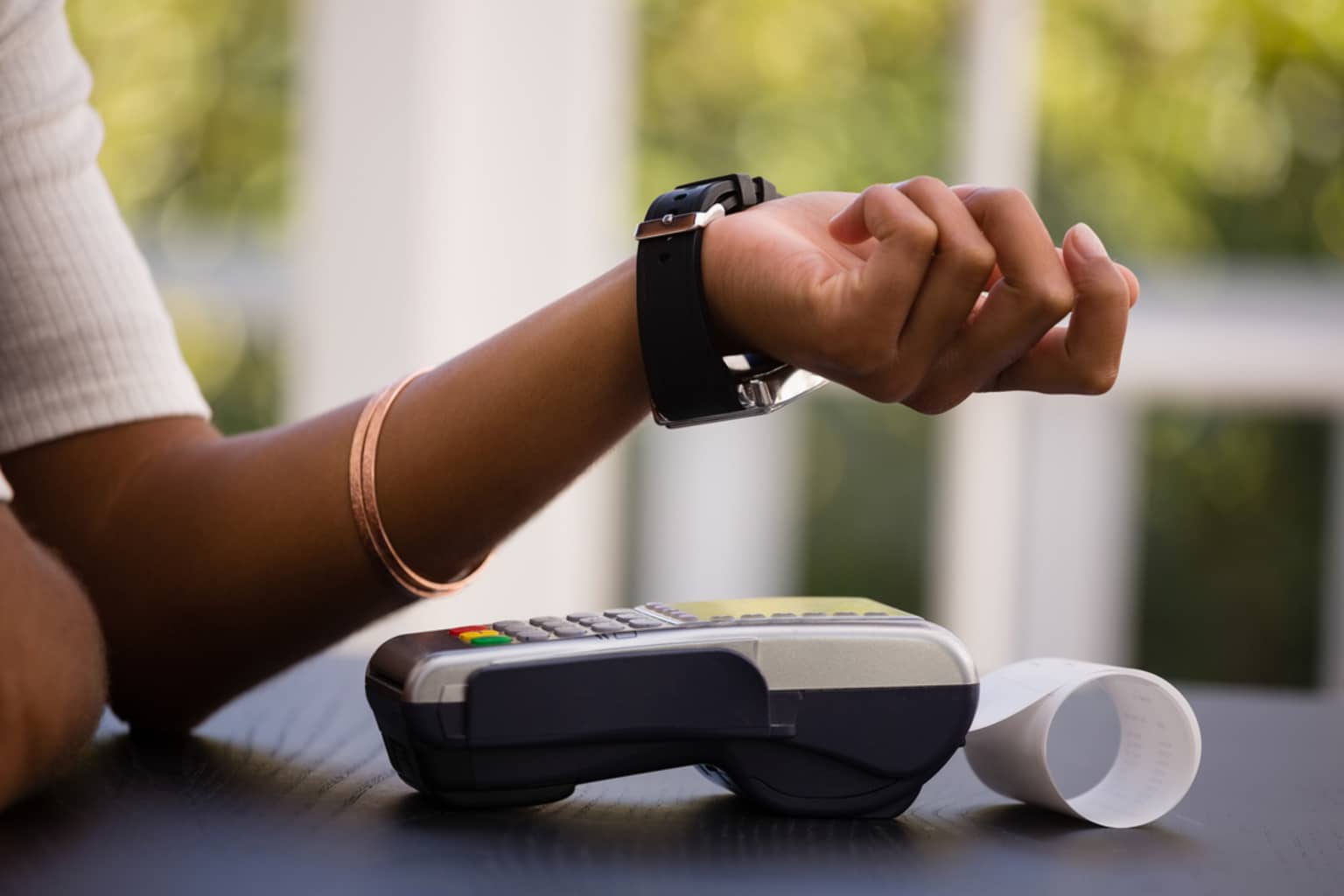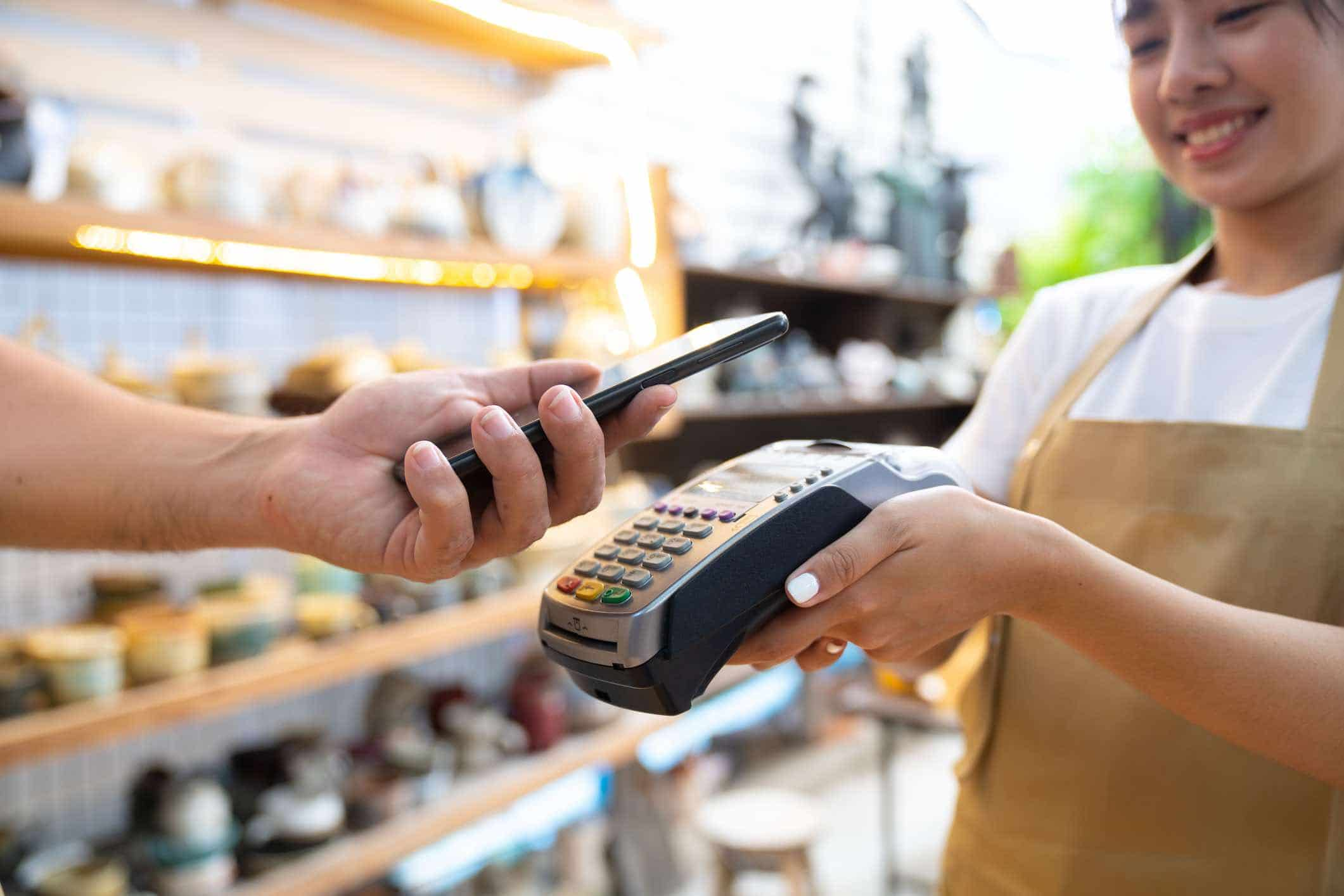The Benefits of a Cashless Society
A cashless society refers to a society where digital transactions are the primary mode of payment, replacing traditional cash transactions. While this transition may seem daunting, it comes with numerous benefits that can revolutionize the way we handle our finances. Here are some of the key advantages of a cashless society:
- Convenience: One of the biggest advantages of going cashless is the convenience it offers. With digital payment methods, such as mobile wallets or contactless cards, you can make quick transactions anytime and anywhere, eliminating the need to carry physical cash.
- Enhanced Security: Carrying cash comes with the risk of theft or loss. In a cashless society, the reliance on digital payments significantly reduces these risks. Transactions are encrypted, and advanced security measures are in place to protect your financial information.
- Improved Tracking and Budgeting: Digital transactions leave a trail that can be easily tracked and analyzed. This allows individuals and businesses to gain better insights into their spending patterns, making it easier to budget and manage finances effectively.
- Increased Efficiency: Cash transactions can be time-consuming, especially when dealing with large sums of money. By going cashless, transactions become faster and more efficient, benefiting both consumers and businesses. This can lead to shorter queues and smoother shopping experiences.
- Financial Inclusion: A cashless society can help bridge the financial inclusion gap by providing access to financial services for those who are unbanked or underbanked. Digital payment methods enable individuals to make transactions and access financial services through their mobile devices, expanding financial opportunities for all.
- Environmental Benefits: The production, transportation, and disposal of physical cash have a significant impact on the environment. Adopting a cashless society reduces the demand for paper money, which in turn conserves natural resources and reduces carbon emissions.
These are just a few of the many benefits that a cashless society can bring. While there are challenges and concerns that need to be addressed, the advantages are undeniable. By embracing digital transactions, we can create a more secure, efficient, and inclusive financial system that benefits individuals and society as a whole.
The Challenges of a Cashless Society
While the transition towards a cashless society brings a multitude of benefits, it is not without its challenges. It is important to recognize and address these challenges to ensure a smooth and successful transition. Here are some of the key challenges associated with a cashless society:
- Technological Dependence: In a cashless society, the reliance on technology is paramount. Access to electronic devices and a stable internet connection become essential for conducting transactions. This poses a challenge for individuals in areas with limited connectivity or those who struggle with technology usage.
- Cybersecurity: As digital transactions increase, so does the potential for cyberattacks. Hackers are constantly finding new ways to exploit vulnerabilities in digital payment systems, putting sensitive financial information at risk. Ensuring robust cybersecurity measures and educating users about online safety is crucial in a cashless society.
- Exclusion of Vulnerable Groups: Not everyone has equal access to digital tools and technologies. A cashless society may inadvertently exclude marginalized groups, such as the elderly, low-income individuals, or those without access to formal banking systems. Efforts must be made to ensure that no one is left behind in the transition to digital payments.
- Privacy Concerns: With digital transactions, there is an increased concern about the privacy and security of personal data. Collecting and storing user information for financial purposes raises questions about how this data is used and protected. Governments and organizations must establish robust privacy regulations to safeguard individuals’ sensitive information.
- Reliance on Infrastructure: Cashless transactions rely on a robust infrastructure, including payment networks, digital banking systems, and secure communication channels. In areas with underdeveloped or unreliable infrastructure, implementing and maintaining these systems can be challenging.
Addressing these challenges is essential in realizing the full potential of a cashless society. Governments, financial institutions, and technology providers must work together to improve infrastructure, enhance cybersecurity measures, and promote financial literacy to ensure a smooth and inclusive transition.
The Role of Technology in a Cashless Society
Technology plays a vital role in shaping and enabling a cashless society. It provides the foundation for the digital payment infrastructure that facilitates secure and convenient transactions. Here are some key aspects of technology’s role in a cashless society:
- Digital Payment Platforms: Technology has given rise to various digital payment platforms, such as mobile wallets, online banking, and peer-to-peer payment apps. These platforms allow users to make quick and seamless transactions using their smartphones or other electronic devices.
- Point of Sale Systems: Technology has revolutionized point of sale systems, making it easier for businesses to accept digital payments. Modern payment terminals and card readers can process transactions from various digital payment methods, including contactless cards and mobile payments.
- Contactless and Biometric Payments: Advancements in technology have introduced contactless payment options, allowing users to make payments by simply tapping their cards or devices. Additionally, biometric authentication, such as fingerprint or facial recognition, enhances security and convenience in cashless transactions.
- Blockchain and Cryptocurrencies: Technology has introduced the concept of blockchain, a decentralized and secure ledger system. Cryptocurrencies, such as Bitcoin, utilize blockchain technology for peer-to-peer transactions, providing an alternative to traditional centralized banking systems.
- Artificial Intelligence and Machine Learning: With the help of AI and machine learning algorithms, financial institutions and payment processors can analyze vast amounts of data to detect fraud, predict customer behavior, and personalize user experiences. These technologies enhance security and improve the efficiency of cashless transactions.
- Internet of Things (IoT): The IoT enables seamless integration between devices, allowing for innovative payment solutions. For example, smart devices like connected cars or wearable devices can initiate payments autonomously, further simplifying the cashless transaction process.
Technology continues to evolve and shape the landscape of a cashless society. Innovations and advancements in technology will play a crucial role in addressing challenges, improving security, and expanding access to digital payment solutions. By embracing these technological developments, we can foster a more efficient, secure, and inclusive cashless society.
Security Concerns in a Cashless Society
While a cashless society offers numerous benefits, it also raises significant concerns regarding security. The reliance on digital transactions and the storage of sensitive financial information can make individuals and businesses vulnerable to various threats. Here are the key security concerns in a cashless society:
- Fraud and Unauthorized Access: As digital transactions increase, so does the risk of fraudulent activities. Cybercriminals are constantly finding new ways to steal financial information, such as phishing scams, malware, or hacking into payment systems. Unauthorized access to digital accounts can lead to identity theft, financial loss, and damage to individuals’ and businesses’ reputations.
- Data Breaches: The collection and storage of personal data necessary for digital transactions create the risk of data breaches. Massive data breaches can expose sensitive financial information, leading to potential misuse or fraud. Building and maintaining robust security measures is crucial to protect users’ data and prevent unauthorized access.
- Privacy Concerns: In a cashless society, financial transactions leave a digital trail that can be tracked and analyzed. This raises concerns about the privacy of individuals’ financial behaviors and personal information. It is essential to establish strong privacy regulations and protect individuals’ rights to control their personal data in the realm of digital transactions.
- Phishing and Social Engineering: Cybercriminals use various tactics, such as phishing emails or phone scams, to deceive individuals into revealing sensitive financial information. Social engineering techniques can manipulate individuals into unknowingly providing access to their digital accounts. Raising awareness and educating users about these techniques is crucial in maintaining security in a cashless society.
- Technical Vulnerabilities: Technology is not immune to vulnerabilities. Software bugs, system glitches, or flaws in encryption algorithms can create opportunities for cyberattacks. Regular security audits, updates, and collaboration between technology providers and security experts are necessary to identify and address these vulnerabilities promptly.
- User Authentication: Ensuring proper user authentication is vital in a cashless society. Weak passwords or inadequate authentication methods can compromise the security of digital transactions. Implementing multi-factor authentication and biometric verification can provide an extra layer of security and minimize the risk of unauthorized access.
Addressing these security concerns is paramount in creating a safe and trusted cashless society. Collaboration between governments, financial institutions, technology providers, and users is essential to establish robust security measures, educate users about potential risks, and minimize the vulnerabilities associated with digital transactions.
Financial Inclusion in a Cashless Society
One of the significant benefits of transitioning to a cashless society is the potential to enhance financial inclusion. Financial inclusion refers to providing access to affordable financial services and products to individuals who are currently marginalized or excluded from the formal banking system. Embracing digital payment solutions can contribute to greater financial inclusion in several ways:
- Access to Basic Financial Services: Digital payment methods, such as mobile wallets and digital banking, enable individuals to access basic financial services like savings accounts, money transfers, and bill payments. These services can be accessed through mobile devices and do not require traditional banking infrastructure, making financial services more accessible to unbanked or underbanked populations.
- Cost Reduction and Convenience: Traditional banking systems often involve high fees and time-consuming processes for basic financial transactions. Digital payment methods eliminate the need for physical travel to a bank or financial institution, reducing costs and providing more convenience, especially for individuals in remote areas or those with limited mobility.
- Microtransactions and Financial Empowerment: Digital payments enable microtransactions, allowing individuals to make small transactions that were previously impractical with cash. This opens up opportunities for businesses in the informal sector and enables financial empowerment for individuals who rely on microbusinesses or gig-based work.
- Access to Credit and Loans: Digital payments create a digital footprint of transactions, providing an alternative method for assessing creditworthiness. This can enable individuals who lack traditional credit history to access credit and loans from alternative lenders or peer-to-peer lending platforms.
- Financial Education and Literacy: The adoption of digital payment methods necessitates financial education and literacy initiatives. Educating individuals on managing digital transactions, understanding digital financial risks, and making informed financial decisions can improve their financial well-being and empower them to take advantage of the opportunities provided by a cashless society.
- Government-to-Citizen Financial Services: Digital payment methods enable governments to efficiently distribute social welfare benefits, pensions, and subsidies directly to citizens’ digital accounts. This reduces corruption, ensures funds reach their intended recipients, and makes it easier for individuals to access government financial services.
By leveraging digital payment technologies, a cashless society can bring previously excluded individuals into the financial mainstream. However, it is essential to address barriers such as technology literacy, internet accessibility, and affordability to ensure that the benefits of financial inclusion reach everyone in society.
The Impact on Small Businesses in a Cashless Society
A cashless society can have a significant impact on small businesses, both positive and negative. While digital payment solutions offer convenience and efficiency, they also present challenges for small businesses. Here are some key factors that impact small businesses in a cashless society:
- Increased Efficiency: Digital payment methods streamline transactions, reducing the time it takes to complete a sale. This can lead to shorter queues and faster service, enhancing the overall customer experience and increasing operational efficiency for small businesses.
- Expanded Customer Base: Accepting digital payments allows small businesses to cater to a wider customer base. As more individuals embrace digital transactions, businesses that do not accept digital payments risk losing potential customers who prefer cashless payment methods.
- Lower Costs and Increased Sales: Handling cash can be costly due to the need for cash handling equipment and security measures. By going cashless, small businesses can reduce costs associated with handling cash and minimize the risk of theft or counterfeit incidents. Additionally, studies have shown that businesses that accept digital payments often see an increase in sales volume.
- Accounting and Monitoring: Digital payment systems offer better tracking and record-keeping capabilities. Small businesses can more easily monitor transactions, track expenses, and analyze sales data, enabling more accurate accounting practices and facilitating better business decision-making.
- Adoption Costs: Transitioning to a cashless payment system can incur upfront costs for small businesses. This includes purchasing or upgrading point-of-sale systems, training staff, and implementing security measures. For some small businesses with limited resources, these costs may present a barrier to entry into the cashless society.
- Dependence on Technology: Small businesses must rely on stable internet connections and functioning technology infrastructure to process digital payments. Technical glitches or internet outages can disrupt business operations and hamper sales. Small businesses should have contingency plans in place to mitigate the impact of technology failures.
- Transaction Fees: Accepting digital payments often comes with transaction fees charged by payment service providers. Small businesses need to consider these fees when determining their pricing or evaluating the financial viability of accepting digital payments.
- Customer Confidence: While digital transactions offer convenience, some customers may still have concerns about the security of their financial information. Small businesses must address these concerns by clearly communicating their security measures and building trust with customers.
Overall, the impact of a cashless society on small businesses is a mix of advantages and challenges. Embracing digital payment methods can improve efficiency, expand customer reach, and reduce costs. However, small businesses need to carefully plan and adapt to the associated costs and considerations to ensure a successful transition.
Privacy Issues in a Cashless Society
As societies become increasingly cashless, privacy concerns arise regarding the collection, use, and protection of personal data in digital transactions. While convenience and efficiency are evident in digital payments, it is essential to address these privacy issues. Here are some key privacy concerns in a cashless society:
- Data Collection: Digital payment systems collect a significant amount of personal data, including transaction history, purchase behavior, and location information. The collection and storage of this data raise concerns about how it is used, shared, and potentially monetized by payment processors and other entities.
- Third-Party Access: Digital payment systems involve multiple parties, such as payment processors, banks, and technology providers. The sharing of financial data with these third parties raises concerns about the security and control of personal information. It is crucial to have strict data protection regulations to ensure that personal data is safely handled and not misused.
- Surveillance and Tracking: Digital payment systems leave a digital trail, allowing for the tracking and surveillance of financial behaviors. This raises concerns about the potential for profiling, targeted advertising, or intrusion into personal financial lives. Users should have control over the collection and use of their financial data to protect their privacy.
- Security Breaches: Digital payments can be vulnerable to security breaches and cyberattacks. Data breaches can expose sensitive financial information, leaving individuals susceptible to identity theft and fraud. Robust security measures should be in place to protect personal information and prevent unauthorized access.
- Lack of Anonymity: Cash transactions offer a level of anonymity, as they do not require the disclosure of personal information. In contrast, digital payments often require personal identification, creating a link between the transaction and the individual. This lack of anonymity can be a concern for those who value privacy or wish to keep their financial transactions private.
- Consent and Control: Users should have control over their personal data and be able to provide informed consent for its use. Clear and transparent information should be provided on how personal data is collected, processed, and shared. Additionally, individuals should have the right to delete or correct their data if needed.
- Government Surveillance: In some cases, governments may have access to financial transaction data for purposes such as taxation or national security. While this access may be necessary, there should be clear regulations in place to prevent abuse of power and protect citizens’ privacy rights.
Addressing these privacy concerns requires a combination of robust regulations, transparency, technological advancements, and user education. Striking a balance between the convenience of digital transactions and safeguarding personal privacy is crucial in building trust and confidence in a cashless society.
The Transition to a Cashless Society
The transition to a cashless society involves a gradual shift from traditional cash-based transactions to digital payment methods. While the benefits of a cashless society are evident, the transition process presents several considerations and challenges. Here are some key factors in transitioning to a cashless society:
- Infrastructure and Accessibility: Adequate technological infrastructure is critical for a cashless society. Access to stable internet connectivity, reliable payment networks, and digital banking services is essential. Efforts should be made to bridge the digital divide, ensuring accessibility for all individuals, including those in remote areas and marginalized communities.
- Education and Awareness: Educating individuals about the benefits and usage of digital payment methods is crucial. Public awareness campaigns and financial literacy programs can help users understand how to navigate digital transactions safely and confidently. Collaboration between governments, financial institutions, and technology providers is necessary to ensure effective education initiatives.
- Addressing Security and Privacy Concerns: Privacy and security must be at the forefront of the transition to a cashless society. Implementing robust security measures, complying with data protection regulations, and ensuring transparency in data collection and usage can help build trust among users. Clear guidelines should be established to protect individuals’ financial data and address privacy concerns.
- Supporting Small Businesses: Small businesses play a vital role in the economy, and supporting them in the transition to a cashless society is essential. This includes providing financial incentives, assisting with the adoption of digital payment systems, and offering training and support to ensure a smooth transition.
- Regulatory Frameworks: Governments need to establish clear regulatory frameworks to govern digital payments and protect consumer rights. These regulations should balance the need for innovation and competition with the importance of consumer protection, security, and privacy. Collaboration between governments, financial institutions, and technology providers is crucial in creating effective and adaptable regulatory frameworks.
- Collaboration and Interoperability: Collaboration between financial institutions, technology providers, and payment networks is essential to ensure interoperability among different digital payment platforms. Seamless integration and compatibility across systems enable users to make transactions easily and confidently, regardless of the platform they choose to use.
- Ensuring Inclusivity: It is essential to consider the needs of marginalized groups and ensure that the transition to a cashless society does not exclude or disadvantage them. Efforts should be made to provide access to digital payment systems, address technological literacy barriers, and promote financial inclusion for all individuals.
The transition to a cashless society requires a multi-faceted approach that involves collaboration between governments, financial institutions, technology providers, and the public. By addressing infrastructure challenges, educating users, and implementing robust security measures, we can navigate the path towards a seamless and inclusive cashless society.
The Future of Payments in a Cashless Society
The evolution of technology and the increasing adoption of digital payment methods indicate a promising future for payments in a cashless society. As we continue to embrace new advancements, several trends are likely to shape the future of payments:
- Mobile Wallets and Contactless Payments: Mobile wallets and contactless payment methods are expected to become even more prevalent. With the convenience of smartphones and wearables, consumers can easily make payments by tapping their devices, eliminating the need for physical cards or cash.
- Biometric Authentication: Biometric authentication, such as fingerprint or facial recognition, offers a secure and convenient method of verifying transactions. As technology improves, biometric authentication is likely to become more widespread, further enhancing the security of digital payments.
- Internet of Things (IoT) Payments: The rise of interconnected devices opens up new possibilities for payments. IoT devices, such as smart home systems or connected cars, can initiate payments autonomously, making transactions seamless and effortless for consumers.
- Peer-to-Peer Payments: Peer-to-peer payment platforms will continue to grow in popularity, allowing individuals to transfer money directly to one another without the need for intermediaries. The ease and convenience of these platforms make them an attractive option for splitting bills, paying friends, and conducting small-scale transactions.
- Blockchain and Cryptocurrencies: Blockchain technology and cryptocurrencies provide decentralized and secure transaction capabilities. As these technologies mature, they may offer more widespread adoption, enabling peer-to-peer transactions with increased transparency and reduced reliance on traditional banking systems.
- Artificial Intelligence (AI) and Machine Learning: AI and machine learning algorithms have the potential to revolutionize payment systems. These technologies can detect and prevent fraud, personalize user experiences, and offer real-time insights into spending patterns. AI-powered chatbots and virtual assistants may also become more prevalent in assisting users with financial transactions.
- Seamless Integration and Interoperability: The future of payments lies in seamless integration and interoperability. Users expect to be able to make transactions effortlessly across different platforms and systems. Collaboration between payment providers, financial institutions, and technology companies will be vital in creating a cohesive and interconnected payment ecosystem.
- Enhanced Security Measures: As technologies evolve, so do the security risks. Future payment solutions will need to employ advanced security measures to protect against cyber threats and ensure the safety of users’ financial data. This may involve stronger encryption methods, multi-factor authentication, and continuous monitoring of transactions.
The future of payments in a cashless society is dynamic and constantly evolving. The continued development and adoption of innovative technologies will shape the way we transact, making payments more seamless, secure, and efficient. As we embrace these advancements, it will be crucial to address privacy concerns, promote financial inclusion, and ensure that the benefits of a cashless society are accessible to all.

























